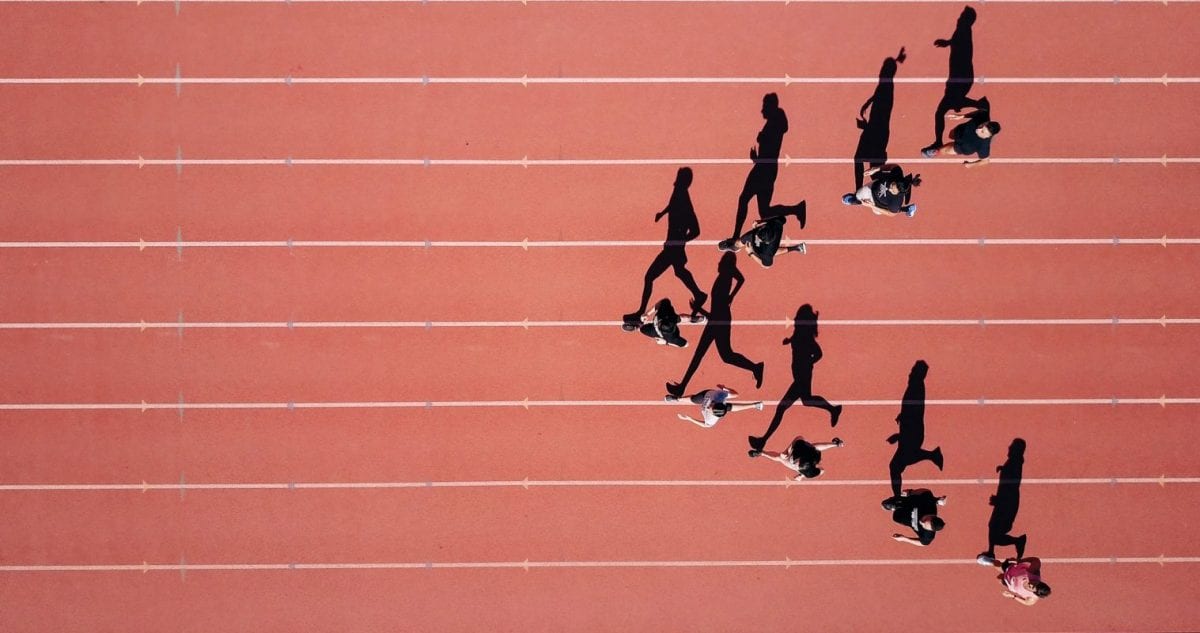Cannabidiol (CBD), Tetrahydrocannabinol (THC), Hemp, Cannabis, Cannabinoid, and Marijuana are hot topics in the health and fitness industry today. Although some of these terms appear to be the same, they are very different from each other. So, in this short read, you’ll understand each of these terms and the difference between them and see whether CBD or Marijuana for athletes is better.
Cannabinoid, Cannabis, CBD, and THC
Cannabinoids are naturally occurring compounds that interact with your body receptors to achieve certain physiological effects. The cannabis plant is the family name to Marijuana and Industrial Hemp plants.
Scientists have discovered that there are over 100 cannabinoids present in the Cannabis plants, and the most common ones are Tetrahydrocannabinol (THC) and Cannabidiol.
Most animals, including humans, produce endocannabinoids. Endocannabinoids are neurotransmitters that bind to receptors (CB1 and CB2) and impact our mood, such as appetite, pain, sleep, and many more.
CB1 is common in the Central Nervous System (CNS) whereas the CB2 is situated in the Peripheral Nervous System (PNS). CB1 affects the spinal cord and the brain, whereas CB2 affects the rest of the body, cutting down on pain and inflammation.
Tetrahydrocannabinol (THC) binds with the CB1 receptor, which explains why we get high when we consume it. Cannabidiol binds with the CB2, which eliminates health challenges without making us high.
In rare cases, Tetrahydrocannabinol (THC) may interact with the CB2 receptor, and Cannabidiol may interact with the CB1 receptor.
Marijuana and Hemp Plant
Marijuana and Hemp are both members of the Cannabis plants.
Marijuana has a high THC to CBD ratio, which means it contains a higher percentage of Tetrahydrocannabinol compared to Cannabidiol.
Industrial Hemp plants have a high CBD to THC ratio, which means they contain a higher percentage of Cannabidiol compared to Tetrahydrocannabinol.
Industrial Hemp plants usually contain less than 0.3 percent of Tetrahydrocannabinol. This explains why hemp-derived Cannabidiol is rarely psychoactive and acceptable to use in most countries around the world.
The higher the THC to CBD ratio, the higher the psychoactive effect on your Central Nervous System (CNS).
Extraction Process of Cannabidiol (CBD)
There are several methods used to extract Cannabidiol (CBD) from Hemp and Marijuana plants, but we’ll only take a look at the two of the most common extraction processes here…
CO2 Extract
The most expensive and purest extraction process is the CO2 method, using an ethanol extraction equipment. There are two levels of extractions – supercritical and subcritical.
Supercritical method is highly effective. The entire system takes place in an entirely separate circuit. To start with, CO2 is cooled to -56 degrees Celsius, and the pressure is increased to 75 PSI (per square inch).
In this state, CO2 behaves like a solvent.
It then passes through a chamber of the cannabis plant, where it pulls out Cannabidiol and terpenes. The collected compound goes into a special collection chamber where the CO2 reverts to its original state.
Solvent Extraction
Solvents like butane, ethanol, and low-grade alcohol are excellent extractors of Cannabidiol from the cannabis plant. This method pulls out terpenes and Cannabidiol compounds from the plant (full spectrum CBD).
However, this method also pulls out Chlorophyll from the plant, which is not safe for human consumption. While Chlorophyll can be filtered out, the quality of the oil is often affected by the filtration method.
Why Is Cannabidiol Better Than Marijuana for Athletes
As explained earlier, Marijuana contains a high percentage of Tetrahydrocannabinol (THC), which will make you high, whereas Cannabidiol (CBD) does not.
Because you put so much pressure and stress on your body – training, workout, and so on – the chances of body pain, injuries, and prolonged wear and tear are not far fetched. Dependence on over-the-counter pain relievers (such as Naproxen Sodium and Ibuprofen) is addictive and leads to lots of health complications from overdoses.
On the other hand, using Cannabidiol products reduces inflammation without side effects. Also, the World Anti-Doping Agency (WADA) recently removed Cannabidiol from its list of prohibited substances, which means professional athletes can’t get fined or punished for having Cannabidiol in their body system.
However, marijuana is still included on the banned substances list, so you can’t use it for “medicinal purposes” as an athlete or fitness aficionado.
5 Health Benefits of Cannabidiol for Athletes
Improves Your Sleep
One of the ways you can achieve greater training gains is by getting more sleep.
And athletes who take Cannabidiol products like oil, gummies, coffee, and other forms of CBD experience a more restful night’s sleep.
That’s because Cannabidiol has an anti-anxiety effect on people, helping them to get the needed rest. Additionally, Cannabidiol inhibits adenosine reuptake, making you fall asleep on time.
As indicated by this study, Cannabidiol can improve the quality of your sleep by interacting with brain receptors that govern the body’s daily wake and sleep cycle.
Check out Laurelcrest, where you can get custom Cannabidiol formulations for all your CBD needs based on your lifestyle.
Reduce Pain
The most common pain athletes experience is inflammation. The wear and tear from training and injury leads to discomfort around the muscles and joints.
Excessive usage of NSAIDS (Non-Steroidal Anti-Inflammatory Drugs) like Aleve and Ibuprofen to reduce inflammation may lead to kidney damage, gastrointestinal bleeding, strokes, heart attacks, and other complications.
However, Cannabidiol eliminates inflammation pain without the resulting side effects of taking NSAIDS. This result of a 2009 study concluded that Cannabidiol suppresses inflammatory response and symptoms by acting on multiple anti-inflammatory pathways.
Boosts Your Mood
Depression, anxiety, and stress affect our mood, productivity, and emotions, especially before a big game or competition. Using Cannabidiol (CBD) products can fight these occasional emotional disorders.
If you feel jittery before a big game or competition, Cannabidiol might be able to calm the nerves and help you stay focused.
Speed Up Recovery and Fight Fatigue
Stress from intense training and workouts increase oxidative damage that can reduce your performance and cause severe fatigue.
When you take Cannabidiol, you will perform better and recover quicker.
Cannabidiol (CBD) also reduces muscle spasms and muscle pain. And many studies indicate the effectiveness of Cannabidiol for fast recovery.
In Conclusion
Taking Cannabidiol (CBD) products is the best way to improve your physical performance while reducing inflammation, improving sleep, controlling stress levels, and helping you stay calm and relax.
Cannabidiol works by activating the endocannabinoid system without getting you high like marijuana. For productivity and good health, choose Cannabidiol products instead of marijuana and use them responsibly.








